Germania Inferior (7)
Q152136Germania inferior: small province of the Roman empire, situated along the Lower Rhine. Its capital was Cologne.
The countryside
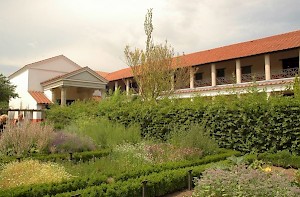
Forum Hadriani (Voorburg), Noviomagus (Nijmegen), Colonia Ulpia Traiana (Xanten), Colonia Claudia Ara Agrippinensium (Cologne), and the lost capital of the Frisiavones were the administrative centers of Germania Inferior, but they were not the only settlements. Many pre-Roman villages were still occupied, and new towns were added. Near the legionary camps and the forts of the auxiliaries, one could visit the civil settlements, where merchants, inn-keepers and the families of the soldiers were living. (The inn of camp Nijmegen-Hunerberg has been excavated.) Along the coast were ports and the villages of fishermen. Charcoal burners, hunters and miners lived in isolated settlements; others preferred to live near a sanctuary (e.g., Elst).
Several new villages were founded near the crossing of a river (e.g., Liberchies, Maastricht and Cuijk) or near the stations along the main road where soldiers changed horses (Heerlen and Jülich on the road between Tongeren and Cologne). Most agricultural settlements were not very impressive: usually a few farmsteads, sometimes in the neighborhood of a rich man's villa, or country estate.
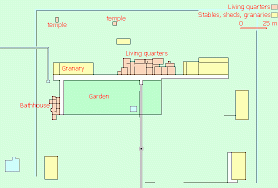
An example is the villa complex near Voerendaal, which was built in the second half of the first century on the site of an older, native village. In the course of the second century, two wings were added to the main building, which was now tens of meters wide. The inhabitants lived luxuriously: there was a bathhouse, several rooms were heated, and the rooms of the servants were fairly comfortable as well. Several walls were decorated with Italian-style fresco's. Of course there were store rooms, granaries, gardens, barns, and stables. A small wall separated the terrain (180x215 meters) from the surrounding grain fields.

Several native peasants from the neighborhood worked on the villa's fields as day laborers. Although they may have known the owner of the estate, there was a big difference between them. The owner was a very rich man who never had to work (or one had to count his activity in the urban council as work), but the day laborer did not even have the certainty that he was allowed to work. Even slaves had more social security, because they knew that there was a meal every day. Most people on the countryside of Germania Inferior must have had a social status between the very rich and very poor.
Indeed, farms of all sizes and functions have been discovered. The farm at Rijswijk-De Bult is exemplary: founded c.25, it was rebuilt several times, every time larger and less primitive than the preceding building phase.
Wherever possible, the farmers produced cereals, especially on the fertile loess in the south (in Gallia Belgica).
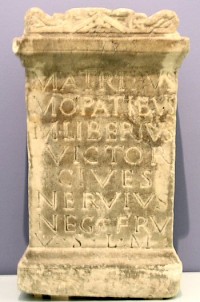
The interregional grain trade must have taken place on a large scale, because there were thousands of soldiers in the forts along the Rhine, who needed more food than Germania Inferior could produce. Several inscriptions attest to this economic activity, like the votive altar of a Nervian named Marcus Liberius Victor at Nijmegen.
Of course, it was impossible to grow cereals everywhere. But even regions where the grain culture was impossible, like the Dutch river area, were integrated in an economy that was dominated by the needs of the army. For example, a stud farm has been excavated near Levefanum (Rijswijk). But the grain farms on the Belgian loessial soils always remained the economic center of gravity of the Low Countries.
To make the production of cereals possible in other regions, the wastelands behind the dunes of Flanders and Zeeland were developed. This country was dominated by large cushions of peat, which rose several meters above the sea level. (The Romans would have been surprised when they knew that we spoke about the 'Low Countries'.) Peat, which is essentially wet vegetable mould, can be reclaimed by digging parallel ditches and draining the field. These ditches are known to have existed on the island Walcheren.
The development of the peat country must have resulted in fertile fields, but was not without risk. The dangers became apparent in the third century.
Crops
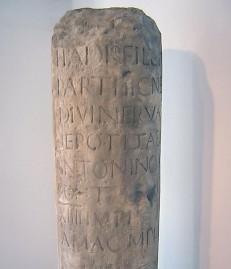
The first legionaries to settle in Germania Inferior were recruited in Italy and southern France. They still appreciated the Mediterranean cuisine and therefore, several products were imported from the south, like figs, olives and olive oil, garum (the ancient equivalent of Vietnamese fish sauce), dates, and all kinds of spice. The local table delicacies were obviously not to the taste of the soldiers. We know that at least one Roman cavalry officer, Pliny the Elder, complained about the quality of the Dutch wild cinnamon.note
Fortunately, not everything had to be imported from the Mediterranean world. Several articles could be produced in Germania Inferior as well. Cherries, for example. Of course, the tree was already known in the Low Countries, but the first stones found in a settlement -an indication for cherry culture- date back to the Roman age. The native population must have learned how to produce this delicacy from the legionaries.
Another novelty was the vine. Belgian tribes had already imported wine long before Julius Caesar subdued them, but grapes were not known until the Romans imported Bacchus' gift in the Low Countries. (The fact that this exotic plant stroke root, suggests that the climate was a bit warmer than today.) However, the quality of the local wine cannot have been very high, because many amphoras from Italy and Andalusia have been discovered in the military settlements along the Rhine.
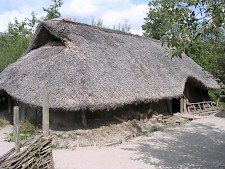
Archaeological research has also revealed that the Romans introduced the walnut tree. Again, the army must have been responsible, because almost all shells have been found in and near fort and fortresses. Beets, apricots, almonds, chickpeas, medlars, pears, and plums were other innovations. The stones of peaches have also been found (in military settlements, of course) but it is possible that these fruits were imported from the south, because peaches can easily be transported. The Romans also introduced new herbs: dill, coriander, mint, celery, fennel, and rue.
During the Roman age, several new animals arrived in the Low Countries. Peasants learned to use mules as draught animals, to employ cats to catch mice, and to enjoy the beauty of peacocks. And finally, gourmets started to appreciate the Guinea fowl, Roman snails (a delicacy), fallow deer, chicken, and eggs.